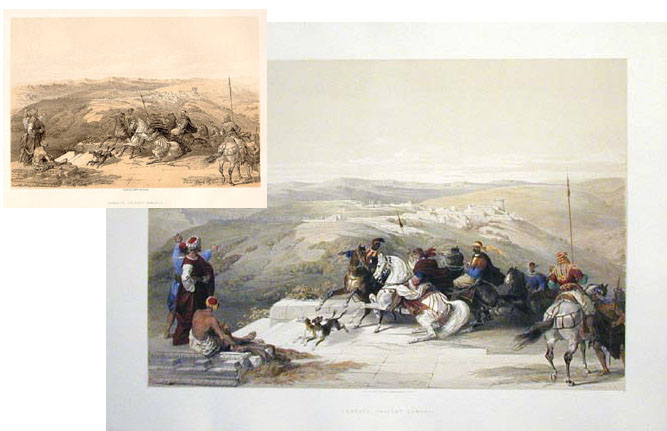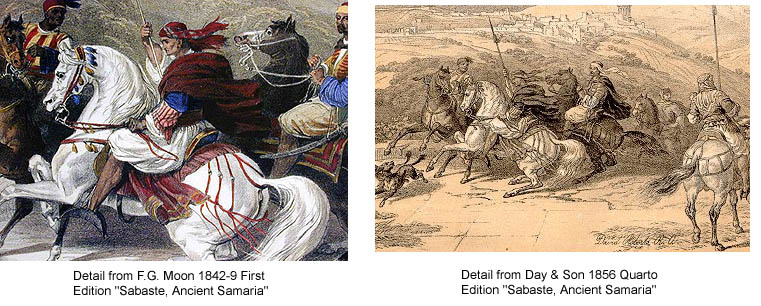
The lithographs as published by F.G. Moon caused an immediate sensation, and the press and critics raved. There was great public demand to view and purchase the prints, but they were expensive - the entire set sold for around $2,000 in today's currency. The result, not surprisingly, was the appearance of cheaper pirated reproductions almost immediately. There were various means of producing such pirated editions, from early versions of photo-mechanical or optical reproduction to simply hand copying the images onto new, smaller lithographic stones. None, however, were of the size and quality of the first editions, as it was simply too expensive and time consuming to duplicate them.
To counter such piracy, F.G. Moon and Roberts authorized smaller and less expensive versions of the prints, beginning with a work produced in Belgium known as the "Stroobint Edition", after the lithographer who drew some of its plates. The Stroobint prints, whose publication began in 1843 while the Moon editions were still in the early part of their own press run, come the closest to the first editions in size and quality, though in this case "closest" is a relative term. They are about 75% of the size of the originals, but the lithography is greatly inferior, and hence their value is much less.
Following the Stroobint work came later authorized editions in much smaller
format, including those from Day & Sons in 1856, and from Cassell, Petter,
Galpin & Co. in 1855 &1879. These were published in small 9" x
12" books to be sold inexpensively to the public. The size of the prints
was 25% or less of the first editions, and the quality of the lithography bore
no resemblance to Haghe's work. Shown below at their actual relative sizes are
the Day & Sons 1856 quarto version of Sabaste, Ancient Samaria compared
with a fine, hand colored SE first edition. The size difference speaks for itself:
More striking than the relative dimensions of the prints, however, is the gap in quality. Shown below are details from these same two prints, showing the far inferior detail of the later edition. It is especially important to keep these size and quality differences in mind when purchasing prints over the internet or through on-line auctions. While the size of the prints is often given as part of their description, a buyer may not realize just how much smaller the later editions really are, and due to resolution limitations on the internet, the dramaticly inferior quality of the lithography is often also not apparent. Shown below are two details from the same prints, though the quality of the detail in the full folio first edition print still does not really come through over the Internet. Again, no further description seems necessary:
